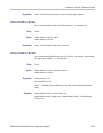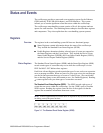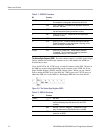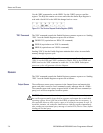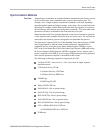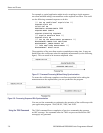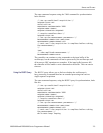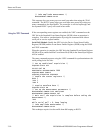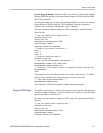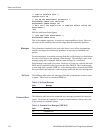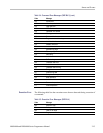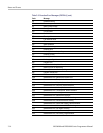
Status and Events
Synchronizat
ion Methods
Overview
Although most commands are completed almost immediately after being received
by the oscilloscope, some commands start a process that requires time. For
example, onc
e a single sequence acquisition command is executed, depending
upon the applied signals and trigger settings, it m ay take a few seconds before the
acquisition is complete. Rather than remain idle while the operation is in process,
the oscilloscope will continue processing other commands. This means that some
operations will not be completed in the order that they were sent.
Sometimes the result of an operation depen ds on the result of an earlier operation.
A first operation must complete before the next one is processed. The oscilloscope
status and event reporting system is designed to accommodate this process.
The Operation Complete (OPC) bit of the Standard Event Status Register (SESR)
can be programmed to indicate when certain oscilloscope operations have
comple
ted and, by setting the Event Status Enable Register (ESER) to report
OPC in the Event Status Bit (ESB) of the Status Byte Register (SBR) and setting
the Service Request Enable Register (SRER) to generate service request upon a
positive transition of the ESB, a service request (SRQ) interrupt can be generated
when certain operations complete as described in this section.
The following oscilloscope operations can generate an O PC:
:ACQuire:STATE <non-zero nr1> | ON | only when in single sequence
acquisition mode
:CALibrate:FACtory STARt
:CALibrate:FACtory CONTinue
:C
ALibrate:FACtory PREVious
:HARDCopy
:HARDCopy START
:DIAg:STATE EXECute
:SAVe:IMAGe <file as quoted string>
:SAVe:SETUp <file as quoted string>
:RECAll:SETUp <file as quoted string>
:SAVe:WAVEform <file as quoted string>
:RECAll:WAVEform <file as quoted string>
:CH<x>:PRObe:DEGAUss EXECute
:AUXin:PRObe:DEGAUss EXECute
TEKSecure
MSO4000 and DPO4000 Series Programmer Manual 3-7



